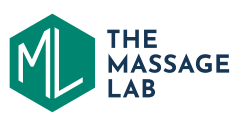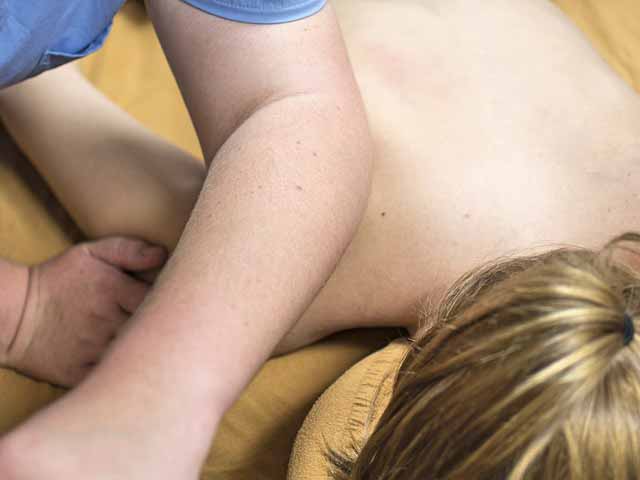Deep Tissue Massage Techniques
Deep tissue massage is a therapeutic technique that focuses on realigning deeper layers of muscles and connective tissues. It is commonly used to treat chronic pain and tension in various parts of the body. In this article, we will explore the different techniques and benefits of deep tissue massage.
What is Deep Tissue Massage?
Deep tissue massage is a type of massage therapy that targets the deeper layers of muscles and fascia (the connective tissue surrounding muscles). Unlike relaxation massages, which primarily focus on providing a soothing experience, deep tissue massage aims to address specific musculoskeletal issues.
During a deep tissue massage, the massage therapist uses slow, deliberate strokes and deep finger pressure to release tension and adhesions in the muscles. This technique helps to break up scar tissue and improve blood flow to the affected areas, promoting faster healing and pain relief.
Techniques Used in Deep Tissue Massage
-
Stripping: Stripping involves deep, gliding pressure along the length of the muscle fibers using the therapist’s forearm, elbow, or thumbs. This technique helps to release tension and tightness in the muscles.
- The therapist applies continuous pressure along the muscle fibers, targeting specific areas that require attention.
- This technique is particularly effective for addressing chronic muscle pain and reducing muscle spasms.
- Stripping helps to improve circulation and restore proper muscle function.
-
Friction: Friction involves applying deep pressure in a circular motion to target specific muscle fibers or knots. This technique helps to break up scar tissue and reduce muscle adhesions.
- The therapist uses their fingertips, knuckles, or palms to apply pressure and create friction on the affected muscles.
- Friction helps to improve flexibility, increase range of motion, and alleviate muscle stiffness.
- This technique is commonly used to address localized areas of tension and discomfort.
-
Trigger Point Therapy: Trigger points are tight knots that form in muscles and can cause referred pain in other areas of the body. Trigger point therapy involves applying direct pressure to these knots to release tension and alleviate pain.
- The therapist identifies specific trigger points and applies sustained pressure to these areas to release the knots.
- Trigger point therapy can help reduce muscle spasms, improve mobility, and alleviate pain caused by trigger points.
- This technique is commonly used to treat conditions such as tension headaches, temporomandibular joint (TMJ) disorders, and sciatica.
-
Myofascial Release: Myofascial release involves applying gentle sustained pressure to the connective tissues (fascia) to release tension and improve mobility. This technique helps to loosen tight muscles and restore proper alignment.
- The therapist applies sustained pressure to stretch and elongate the fascia, helping to release tension and improve range of motion.
- Myofascial release can help alleviate chronic muscle pain, improve posture, and enhance athletic performance.
- This technique is commonly used to address conditions such as fibromyalgia, frozen shoulder, and IT band syndrome.
-
Cross Fiber Friction: Cross fiber friction involves applying pressure perpendicular to the muscle fibers to break up scar tissue and improve flexibility. It is particularly effective in treating tendonitis and other soft tissue injuries.
- The therapist uses their fingers or thumbs to apply pressure across the muscle fibers, targeting areas of scar tissue.
- Cross fiber friction helps to break down adhesions, increase circulation, and promote healing of soft tissue injuries.
- This technique is commonly used for conditions such as Achilles tendonitis, rotator cuff injuries, and tennis elbow.
-
Deep Transverse Friction: Deep transverse friction involves applying deep pressure across the muscle fibers to reduce muscle spasms and increase flexibility. This technique is commonly used to treat conditions like tennis elbow and plantar fasciitis.
- The therapist uses their fingers or thumbs to apply deep pressure across the muscle fibers in a transverse direction.
- Deep transverse friction helps to reduce muscle spasms, break down scar tissue, and improve mobility.
- This technique can be beneficial for individuals recovering from sports injuries or those with chronic pain conditions.
Benefits of Deep Tissue Massage
-
Pain Relief: Deep tissue massage helps to alleviate chronic pain by targeting the root cause of the problem – tight muscles and adhesions. It can provide relief from conditions like back pain, neck pain, and fibromyalgia.
- By releasing tension and breaking up adhesions, deep tissue massage helps to reduce inflammation and promote pain relief.
- This technique can help individuals manage and alleviate chronic pain conditions, improving their overall quality of life.
- Deep tissue massage can also help enhance the effectiveness of other pain management strategies, such as physical therapy and medication.
-
Improved Flexibility: By releasing tension and breaking up scar tissue, deep tissue massage can improve flexibility and range of motion. This is particularly beneficial for athletes and individuals with mobility issues.
- Deep tissue massage helps to stretch and lengthen muscles, allowing for greater flexibility and improved performance.
- By addressing muscle imbalances and restrictions, this technique can enhance athletic performance and prevent future injuries.
- Increased flexibility can also improve daily activities and reduce the risk of strains and sprains.
-
Stress Reduction: Deep tissue massage has a calming effect on the body and mind. It helps to reduce stress hormones like cortisol and increases the production of endorphins, promoting relaxation and a sense of well-being.
- The deep pressure applied during a deep tissue massage triggers the release of endorphins, which are natural mood enhancers.
- This technique can help individuals manage stress, anxiety, and depression, improving their mental health and overall well-being.
- Deep tissue massage provides a therapeutic and rejuvenating experience, allowing individuals to unwind and recharge.
-
Injury Rehabilitation: Deep tissue massage can aid in the rehabilitation process by promoting faster healing and reducing inflammation. It can be beneficial for individuals recovering from sports injuries or surgeries.
- By improving blood flow and promoting the delivery of oxygen and nutrients to the affected area, deep tissue massage can accelerate the healing process.
- This technique helps to reduce swelling, alleviate pain, and improve tissue regeneration, facilitating a faster recovery.
- Deep tissue massage can also prevent the formation of scar tissue and promote proper alignment during the healing process.
-
Postural Improvement: Poor posture can lead to muscle imbalances and chronic pain. Deep tissue massage can help correct postural issues by releasing tension in the muscles and restoring proper alignment.
- Deep tissue massage targets the muscles responsible for maintaining posture, helping to release tension and improve alignment.
- By addressing postural imbalances, this technique can alleviate chronic pain and prevent the development of further musculoskeletal issues.
- Improved posture can enhance overall body mechanics, reduce strain on joints, and improve daily activities.
-
Improved Blood Circulation: The deep pressure applied during a deep tissue massage helps to improve blood flow to the muscles, promoting the delivery of oxygen and nutrients. This can enhance overall health and vitality.
- Deep tissue massage stimulates blood circulation, allowing for increased oxygen and nutrient supply to the muscles and tissues.
- Improved blood flow helps to remove metabolic waste products, reduce inflammation, and promote tissue repair.
- This technique can improve overall health, boost energy levels, and support the body’s natural healing processes.
In conclusion, deep tissue massage is a valuable therapeutic technique that offers numerous benefits for those seeking relief from chronic pain, improved flexibility, and overall well-being. By employing various techniques like stripping, friction, trigger point therapy, myofascial release, cross fiber friction, and deep transverse friction, a skilled massage therapist can effectively address musculoskeletal issues and promote healing. If you are experiencing any chronic pain or tension, consider trying deep tissue massage to experience its transformative effects on your physical and mental health.
Q: What is deep tissue massage?
A: Deep tissue massage is a type of massage therapy that targets the deeper layers of muscles and fascia to address specific musculoskeletal issues.
Q: What techniques are used in deep tissue massage?
A: The techniques used in deep tissue massage include stripping, friction, trigger point therapy, myofascial release, cross fiber friction, and deep transverse friction.
Q: What are the benefits of deep tissue massage?
A: The benefits of deep tissue massage include pain relief, improved blood flow, faster healing, reduced muscle tension, and increased flexibility.
Q: How does deep tissue massage help with pain relief?
A: Deep tissue massage helps with pain relief by releasing tension and adhesions in the muscles, breaking up scar tissue, and improving blood flow to the affected areas.

